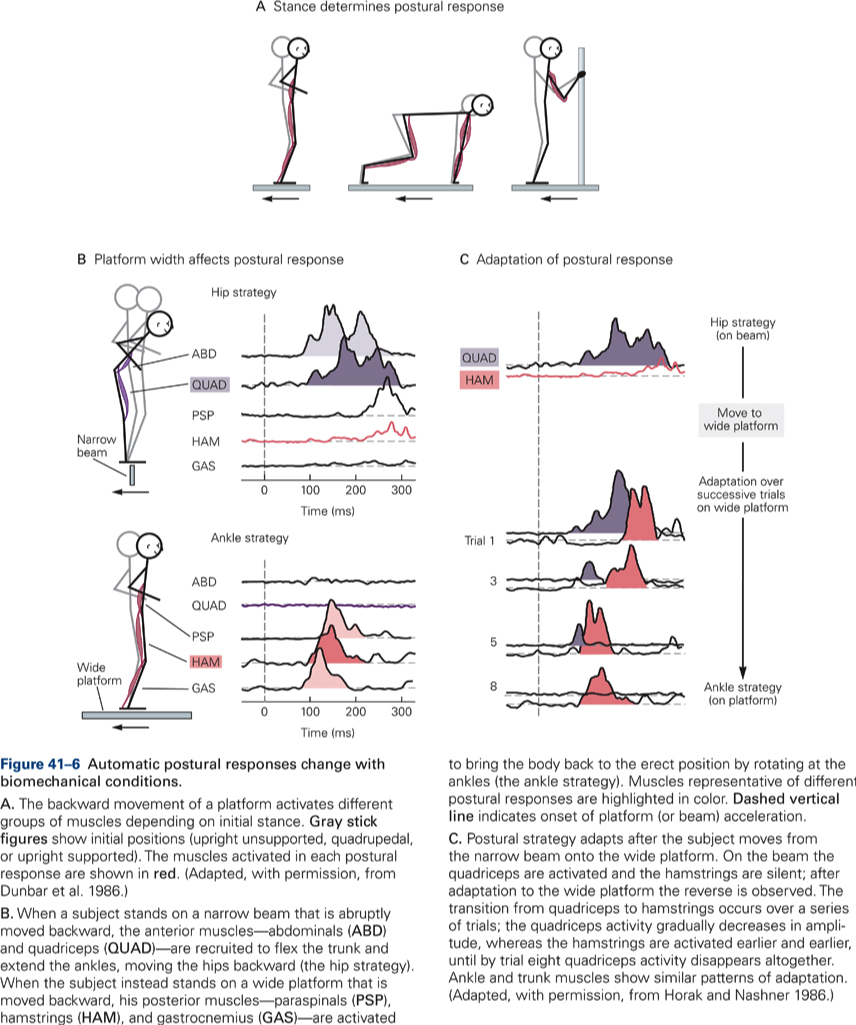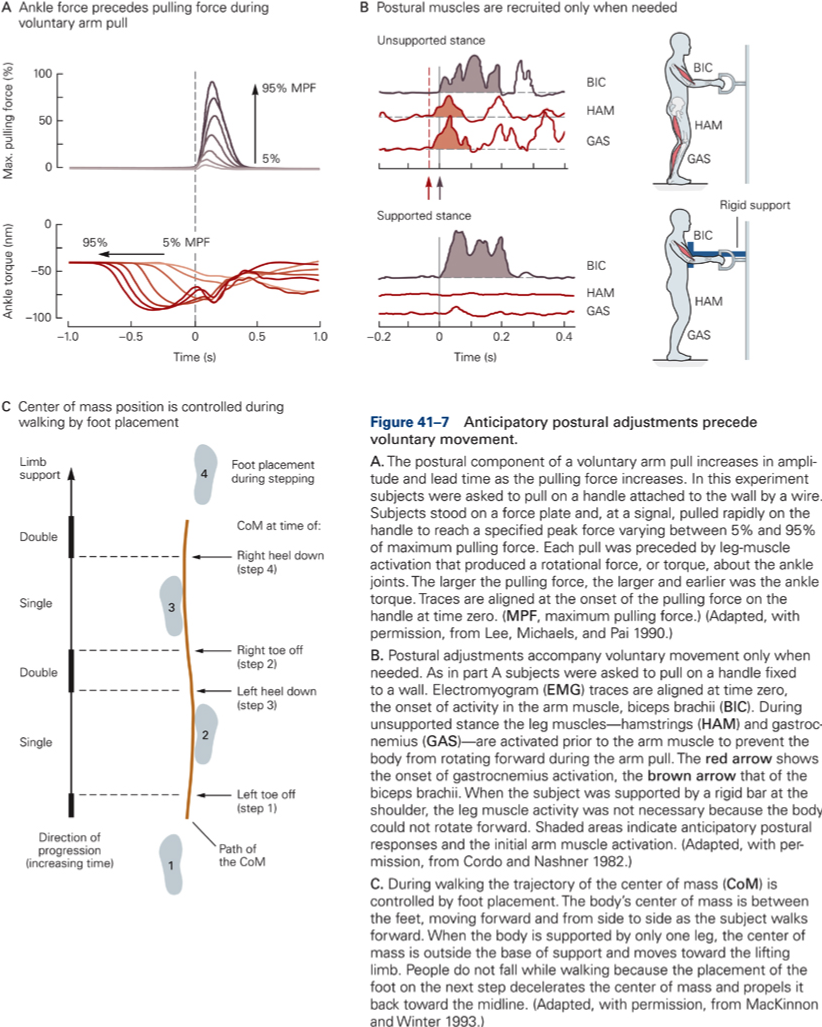Neural Control of Movement
Posture
Key Takeaways
Posture is defined as the overall pattern of the body and limbs relative to each other, and their orientation in space.
Postural control serves three functions:
- Support body against gravity.
- Stabilize supporting parts of body while other parts are moved.
- Balance body on its base of support.
Compensatory or feedback postural adjustments
Compensatory or feedback mechanisms are evoked by activation of sensory receptors (somatosensory, visual, and vestibular) following the loss of balance. They are reflex-like responses, that is, they are extremely rapid, involuntary, highly stereotypic, and consistent. They can be modified by experience.

Postural responses triggered by somatosensory input
Example: standing in train which suddenly starts to move backwards causes you to sway forward. Mechanism of postural adjustment involves stretch reflexes. Input: stretching of gastrocnemius muscle (ankle extensor) output: contraction of gastrocnemius muscle restore center of body mass.
Postural responses triggered by visual input
Example: When you are seated in a stationary train and the train on the next track starts to move, you experience the sensation that your train is moving in the opposite direction.
Postural responses triggered by vestibular input
Example: standing on sway-referenced platform with eyes closed.
Platform studies can be adapted to allow both horizontal translation and ankle rotation. If the platform is rotated in exactly the same direction as body sway produced by platform translation, then the angle of the ankle joint will be stabilized even though the body has been allowed to sway (sway-referenced platform). Under these conditions, the somatosensory input from the ankle is reduced, and if the subjects close their eyes, the major source of input about body position is the vestibular system.
Under normal conditions all three classes of receptors contribute to stabilization of the body to maintain balance; balance can be maintained with only one of the three inputs active, however. For example, we do not loose our balance if we stand with our eyes closed on a sway-referenced platform.
Rescue reactions
Rescue reactions are gross movements of the whole body that occur to restore balance once the center of mass is outside the base of support.
- Stepping
- Sweeping: when stepping inappropriate, sometimes in effort to locate stable objects to grasp onto (example: swimmer at edge of pool swings arms forward to maintain balance)
- Protective reactions: arms thrown out, trunk rotated to break fall. These are not easily suppressed (example: arms thrown through windows, etc.)
Anticipatory or feedforward postural adjustments
- Predict disturbances and produce preprogrammed responses that maintain stability
- Incorporated in the motor plan for voluntary movement
- Occur at the same time or prior to the voluntary movement
Example: person pulling handle requires prior leg adjustment

In this case, input is a voluntary command rather than a muscle stretch. Biceps is activated to pull handle towards the body. This movement would have the effect of swaying the whole body forward. However, the motor plan for the arm movement also includes activation of the gastrocnemius muscle in leg (ankle extensor). This has the effect of bracing the body. EMG recordings show that the gastrocnemius muscle in the leg is activated prior to the biceps muscle in the arm. Therefore, the gastrocnemius activation is anticipatory of the body displacement that would occur as a result of the arm movement stabilize supporting body parts while another body part is being moved.
Additional examples of anticipatory postural adjustments:
- Lift chair with heels against wall.
- Raising on tip-toes. Prime mover gastrocnemius, but preceded by the tibialis anterior muscle. Tibialis anterior brings body forward to minimize backwards sway that would result from contracting gastrocnemius in isolation.
- Bimanual task in which subject supports heavy weight by elbow flexion.
Key Takeaways
Postural adjustments are achieved by two major mechanisms:
- Compensatory or feedback mechanisms are evoked by sensory events following a disturbance of balance. These automatic postural adjustments are typically produced by body sway and are extremely rapid reflex-like responses.
- Anticipatory or feedforward mechanisms predict disturbances and produce preprogrammed responses that maintain stability.


